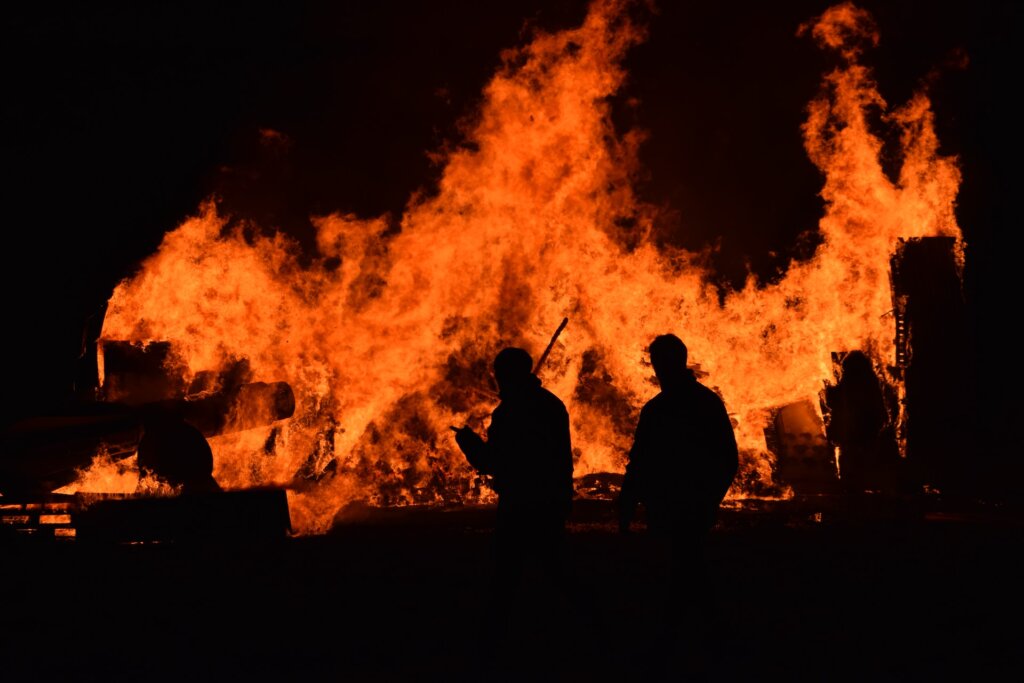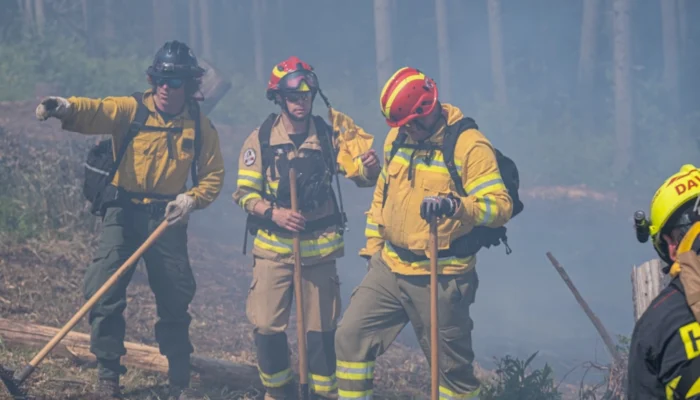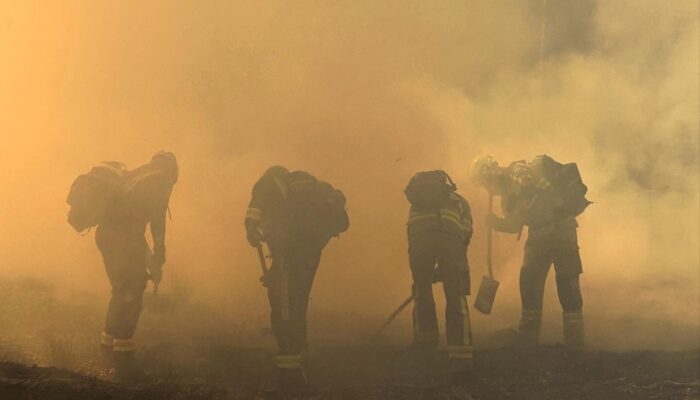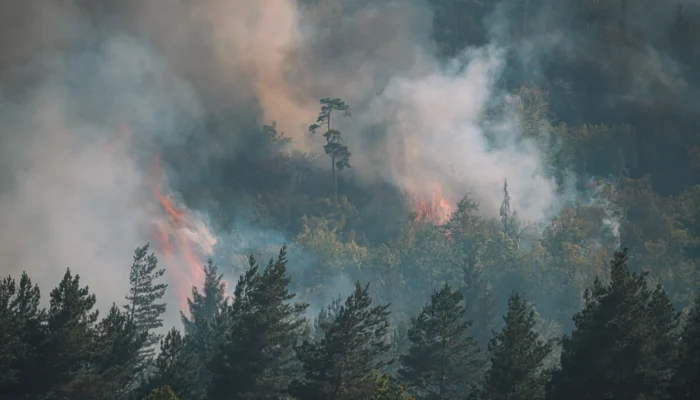While we can point out areas with increased wildfire risk, we do not have any tools capable of accurately predicting wildfires. Unfortunately, prevention methods are not always 100% effective as well. This means that the best way for you and your loved ones to stay safe when a wildfire breaks out is to prepare for it. There are many steps you can take to protect yourself and your property, and we’ll talk more about a few of them below.
.
Table of Contents
ToggleHow Can You Prepare Your Home for a Wildfire?
Use Non-combustible Building Materials
Even if you have a home insurance policy that covers wildfire risks, it will only help you recover financially from fire-related losses. Knowing how to prepare for a wildfire by using fire-resistant building materials, such as brick, stone, concrete, and steel, can help you minimize damage in the first place. Even wooden constructions treated with specialized chemicals can gain some level of fire resistance.
Remember that well-insulated windows and doors can prevent smoke from entering your building. And speaking of windows, tempered glass copes much better with high temperatures, so while such panes are more expensive, they are a great choice, especially in wildfire-prone areas.
Apart from choosing the right materials, regular maintenance is another essential part of how to prepare for a wildfire. Keep the roof and gutters clean by removing accumulated flammable matter, e.g., branches and leaves. When using any type of fire-resistant coating on wood or other surfaces, it’s important to follow the manufacturer’s instructions regarding expiration and re-application dates.
.
Create a Plant-Free Zone Around Your Property
When fighting wildfires, firefighters use control or fire lines to stop the fire from spreading further. You can use the same method to protect your home. Whenever possible, it’s recommended to maintain at least a 30-foot-wide safety zone around the property. Such a barrier can be created by reducing potential wildfire fuel, including wooden structures, shrubs, vines, trees, and any other type of flammable vegetation. Without anything to feed its growth, you may be able to put enough distance between your property and the flames to avoid fire and heat damage. It’s also best to keep flammable items, such as firewood or propane tanks, away from the building.
.
![[ How to Prepare for a Wildfire ] Evacuation Plan and an Emergency Supply Kit](https://smokedsystem.com/wp-content/uploads/2023/09/evacuation-plan-and-an-emergency-supply-kit.jpg)
.
Create an Evacuation Plan and an Emergency Supply Kit
When there’s no fire on the horizon, it’s easy to ignore the risk, but wishful thinking will not keep you safe in an emergency. That’s why, especially if you live in a remote location or close proximity to a forest or other wildland area, it’s worth taking a minute to look around your property, clear out potential evacuation routes, find the best place for the whole family to gather in to evacuate efficiently and, most importantly, make sure that each family member knows the plan and is aware of their responsibilities.
Another thing you can do in advance to speed up the evacuation process is to prepare your emergency or disaster supply kit. What should be in it? Here are a few examples:
- Bottled water
- Non-perishable food items
- Battery-powered radio and flashlight
- First aid kit
- Extra batteries, power banks, and phone chargers
- Local map
- Basic tool kit
.
Follow the Weather Forecast and Official Announcements From Local Authorities
It’s always a good idea to keep track of important announcements from your local fire department and authorities, especially during fire seasons, droughts, and heatwaves when the wildfire risk is much higher. Weather conditions can not only increase the risk but also affect its spread, so short and long-term weather forecasts can give you a clearer picture of the situation.
If there’s an evacuation order for your area, follow it immediately. Remember that such orders are issued when there’s a confirmed risk. Staying home may endanger your life and make firefighters’ work more complicated.
.
Make Sure That You and Your Family Know How to Act During a Wildfire
A good emergency plan should divide responsibilities. These can include things such as:
- gathering food and medicines,
- getting the car ready,
- shutting off natural gas, propane, or fuel tanks,
- closing the windows,
- moving flammable furniture and items away from the windows,
- making sure that kids, elderly relatives, and family members with disabilities are ready to evacuate,
- locating all pets and taking them to the car,
- checking on neighbors to make sure they know about the evacuation.
By having a clear and well-rehearsed plan, you can ensure that no time will be wasted when you have to evacuate.
.
Install a Smoke and Fire Detection System
The sooner you find out about the wildfire risk, the more time you’ll have to prepare and evacuate before the flames come close enough to pose a threat to your health and life. Wildfire detection systems are a great solution for towns, communities, and individuals who want to monitor the surrounding area 24/7.
Thanks to sensitive optical sensors and innovative algorithms, our SmokeD automatic system can detect early signs of smoke and fire and notify you of potential danger right away via web or phone applications. If you’re interested in learning more about our offer and getting solutions tailored to your needs, contact us! We’ll be happy to answer your questions!




